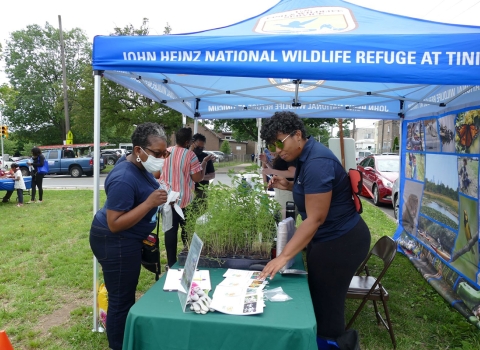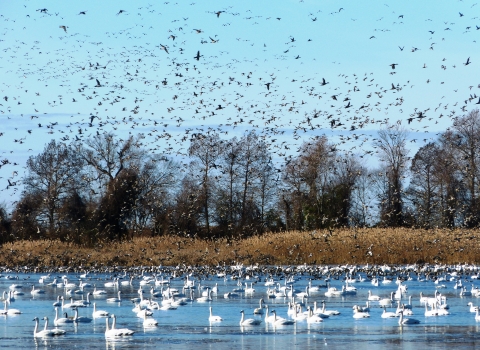Clay Stern’s passion for Environmental Justice is evident as he recounts the industrial history of the greater New York area—and the unfair price current residents pay in the form of contamination and lack of green space. It’s clear he finds improving lives, in addition to fish and wildlife habitats, rewarding.
As a fish and wildlife biologist, Stern has overseen the Natural Resource Damage and Restoration (NRDAR) Program and oil spill preparedness and response at the New Jersey Field Office for more than 20 years. Before joining the Service, he was a molecular biologist in both medical research and forensic laboratories.
“In many ways, I much prefer working as an environmental steward,” Stern says.
The goal of NRDAR is to replace, restore, or acquire the equivalent of the resources and recreational opportunities affected by contamination at no cost to taxpayers. Although the restoration focus is injured resources, federal and state trustees also consider Environmental Justice when choosing projects.
Innovation in Restoration
The extensive Diamond Alkali Superfund site centered in Newark, New Jersey, is contaminated with hazardous chemicals, including dioxins and polychlorinated biphenyls (PCBs). The National Oceanic and Atmospheric Administration (NOAA) and the Service are Federal Natural Resource Trustees for the site. In December, they issued a draft early restoration plan and environmental assessment proposing a five-acre park along the Passaic River in East Newark.
In addition to bird and pollinator habitat, the park will offer much-needed natural green space and waterfront access to the local community, which is 60 percent Hispanic or Latino and has a poverty rate of 13%, above the national average. The project supports President Biden’s climate plan, which recognizes that communities of color and low-income neighborhoods have been disproportionally harmed by climate change climate change
Climate change includes both global warming driven by human-induced emissions of greenhouse gases and the resulting large-scale shifts in weather patterns. Though there have been previous periods of climatic change, since the mid-20th century humans have had an unprecedented impact on Earth's climate system and caused change on a global scale.
Learn more about climate change and environmental contamination for decades.
“It will provide a model for a Potentially Responsible Party to resolve, in part, their liabilities under the Superfund law by restoring injured natural resources sooner at lower expense,” says Stern. “The public will benefit by having injured resources, and the services they provide, restored potentially decades sooner.”
That translates to more children growing up with a place to explore the outdoors.







